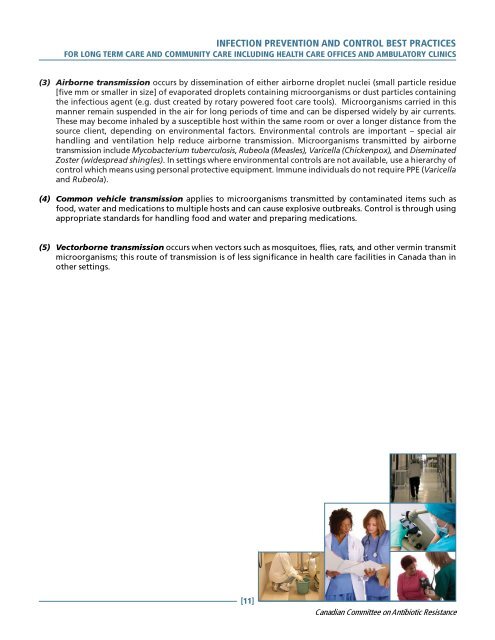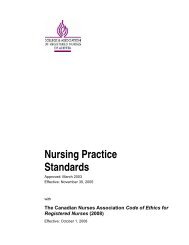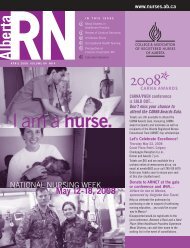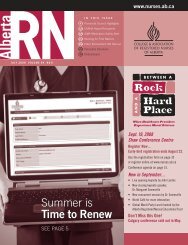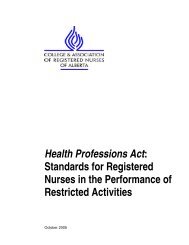Infection Prevention and Control Best Practices - College ...
Infection Prevention and Control Best Practices - College ...
Infection Prevention and Control Best Practices - College ...
You also want an ePaper? Increase the reach of your titles
YUMPU automatically turns print PDFs into web optimized ePapers that Google loves.
INFECTION PREVENTION AND CONTROL BEST PRACTICES<br />
FOR LONG TERM CARE AND COMMUNITY CARE INCLUDING HEALTH CARE OFFICES AND AMBULATORY CLINICS<br />
(3) Airborne transmission occurs by dissemination of either airborne droplet nuclei (small particle residue<br />
[five mm or smaller in size] of evaporated droplets containing microorganisms or dust particles containing<br />
the infectious agent (e.g. dust created by rotary powered foot care tools). Microorganisms carried in this<br />
manner remain suspended in the air for long periods of time <strong>and</strong> can be dispersed widely by air currents.<br />
These may become inhaled by a susceptible host within the same room or over a longer distance from the<br />
source client, depending on environmental factors. Environmental controls are important – special air<br />
h<strong>and</strong>ling <strong>and</strong> ventilation help reduce airborne transmission. Microorganisms transmitted by airborne<br />
transmission include Mycobacterium tuberculosis, Rubeola (Measles), Varicella (Chickenpox), <strong>and</strong> Diseminated<br />
Zoster (widespread shingles). In settings where environmental controls are not available, use a hierarchy of<br />
control which means using personal protective equipment. Immune individuals do not require PPE (Varicella<br />
<strong>and</strong> Rubeola).<br />
(4) Common vehicle transmission applies to microorganisms transmitted by contaminated items such as<br />
food, water <strong>and</strong> medications to multiple hosts <strong>and</strong> can cause explosive outbreaks. <strong>Control</strong> is through using<br />
appropriate st<strong>and</strong>ards for h<strong>and</strong>ling food <strong>and</strong> water <strong>and</strong> preparing medications.<br />
(5) Vectorborne transmission occurs when vectors such as mosquitoes, flies, rats, <strong>and</strong> other vermin transmit<br />
microorganisms; this route of transmission is of less significance in health care facilities in Canada than in<br />
other settings.<br />
[11]<br />
Canadian Committee on Antibiotic Resistance


